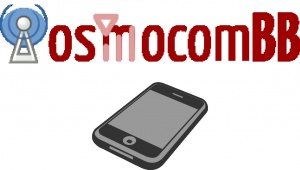Reading The GSM Beacon Carrier with OsmocomBB and stoneEDGE
From iis-projects
Introduction
GSM is the most ubiquitous mobile communication standard worldwide. Millions of people use is every day. Recently, a physical layer (PHY) implementation of the GSM mobile communication standard has been completed at the Integrated Systems Laboratory (IIS). It comprises a state of the art transceiver chip and a digital baseband on an ASIC called stoneEDGE. In the past few years, the open source community behind the OsmocomBB project [1] has implemented a relatively complete GSM protocol stack for a Mobile Station (MS). In this project the student will combine the IIS PHY with OsmocomBB software to build a complete MS capable of placing and receiving voice calls.
Project Description
A cellular modem consists of various portions:
- Radio Frequency (RF) analog processing
- Digital Baseband (DBB) processing
- L2/L3 processing on CPU
A functional RF/FPGA/CPU testbed for fast prototyping is available which distributes modem tasks over three separate boards. These are
- Double RF (from project partner ACP www.newacp.ch) on IIS EvalEDGE v1.0 board
- IIS DBB from stoneEDGE on Virtex-6 FPGA on ML605 board (see [2])
- L2/L3 processing on ARM core on ZedBoard (see [3])
This IIS 2G testbed shall be used during this project.
The OsmocomBB project uses a similar modem partitioning. The PHY runs on an old Motorola C123 where as L2/L3 runs on a regular Linux machine. Communication between the PHY and L2/L3 takes place over a serial link using a simple protocol, called L1CTL.
The IIS 2G testbed has no operating system (OS) running on it. Therefore, in order to run OsmocomBB L2/L3 on the testbed a small OS is required. The free and real-time OS FreeRTOS [4] shall be used. In a first step, FreeRTOS needs to be ported onto the 2G IIS testbed. In a second step, OsmocomBB L2/L3 can be run on the FreeRTOS on the testbed to support voice calls.
Status: Completed
- Student: Demian Jäger (sem15f15)
- Supervision: Benjamin Weber, Harald Kröll
Professor
References
[1] OsmocomBB. http://bb.osmocom.org/trac/, April 2015.
[2] XILINX. Virtex-6 FPGA ML605 Evaluation Kit. http://www.xilinx.com/ml605, April 2015.
[3] AVNET. ZedBoard. http://zedboard.org/product/zedboard, April 2015.
[4] FreeRTOS - Market leading RTOS (Real Time Operating System) for embedded systems with Internet of Things extenstions. http://www.freertos.org/, April 2015.
